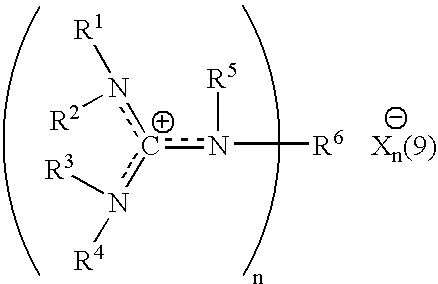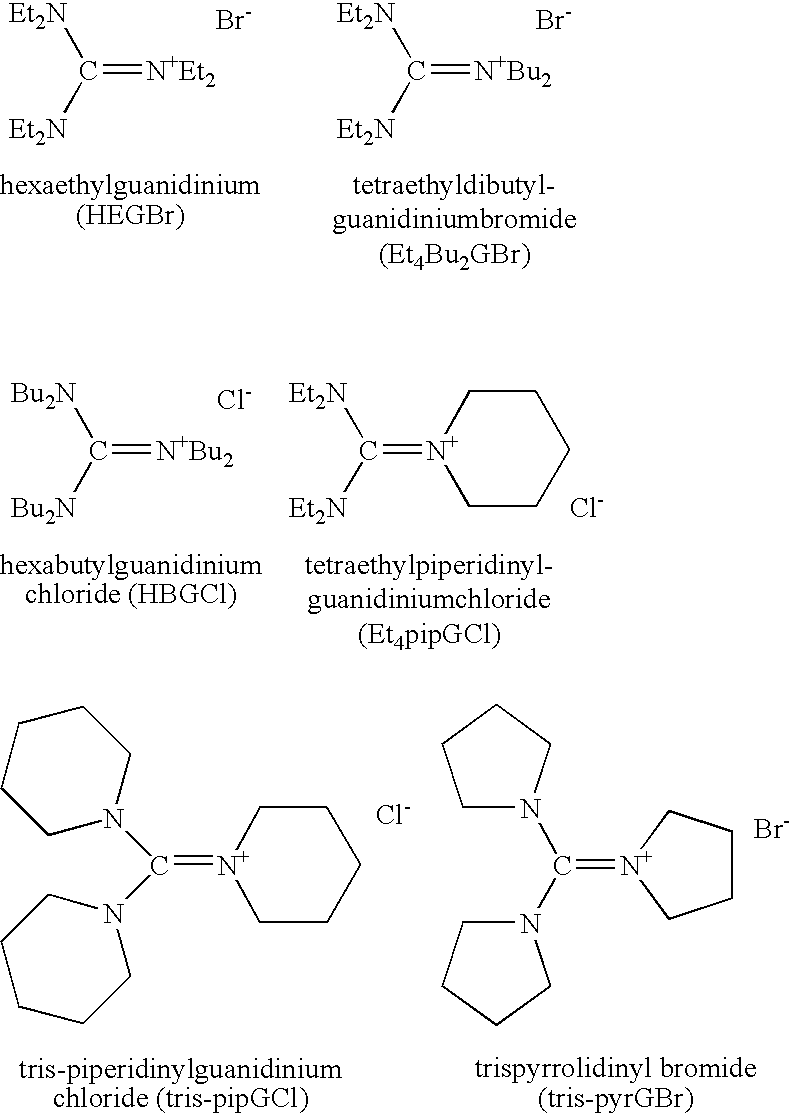Aqueous catalytic process for the preparation of thiocarboxylate silane
a catalytic process and thiocarboxylic acid technology, applied in the field of thiocarboxylic acid silane, can solve the problems of low catalyst reaction rate, uneconomical process, complicated purification procedures, etc., and achieve the effects of significantly improving yield and quality, reducing catalyst usage and time cycle, and improving overall reaction kinetics
- Summary
- Abstract
- Description
- Claims
- Application Information
AI Technical Summary
Benefits of technology
Problems solved by technology
Method used
Image
Examples
example 1
A. Preparation of Aqueous Sodium Thiooctanoate
[0059] A commercially available 337 grams of 45 weight % aqueous solution of sodium hydrogen sulfide (NaSH) was introduced into a 2 liter round bottomed flask with bottom take-off and 3 necks. The flask was provided with mechanical agitation, temperature control, addition funnel and reflux and take-off condenser. The material was diluted to 24% by adding 295 grams of water. To this agitated solution was added 1.7 grams of 34.5 weight % aqueous HEGCl solution at room temperature. 200 grams of octanoyl chloride were charged to the addition funnel and slowly added to the reaction mixture over 40 minutes while the flask was cooled with a water bath in order to maintain the temperature at 30-35° C. Very toxic hydrogen sulfide was released during the addition requiring special safety precautions to minimize exposure. The product was a clear aqueous solution of sodium thiooctanoate. The conversion was quantitative resulting in a purity of min...
example 2-6
[0061] Examples 2-6 were carried in substantially the same manner as Example 1, the specific process conditions and results being set forth in the following table:
Chloropropyltri-HEGCl,Temp.60 min,120 min,180Final purityethoxysilane,Total Heavies,Ex.g° C.wt %wt %minby GC, wt %wt %wt %2119571.780.481.891.914.56.853229565.577.585.39410.53.94229059.972.379.291.417.46.552210076.886.875.48.223.3609564.273.178.487.317.99.4
[0062] The reactions in Examples 1-6 were monitored every hour by GC. The residual chloropropyltriethoxysilane in the crude was analyzed by GC. The final purity of the stripped material and the amount of heavies generated in the process are also given in the table.
PUM
| Property | Measurement | Unit |
|---|---|---|
| pressures | aaaaa | aaaaa |
| pressures | aaaaa | aaaaa |
| temperature | aaaaa | aaaaa |
Abstract
Description
Claims
Application Information
 Login to View More
Login to View More - R&D
- Intellectual Property
- Life Sciences
- Materials
- Tech Scout
- Unparalleled Data Quality
- Higher Quality Content
- 60% Fewer Hallucinations
Browse by: Latest US Patents, China's latest patents, Technical Efficacy Thesaurus, Application Domain, Technology Topic, Popular Technical Reports.
© 2025 PatSnap. All rights reserved.Legal|Privacy policy|Modern Slavery Act Transparency Statement|Sitemap|About US| Contact US: help@patsnap.com



